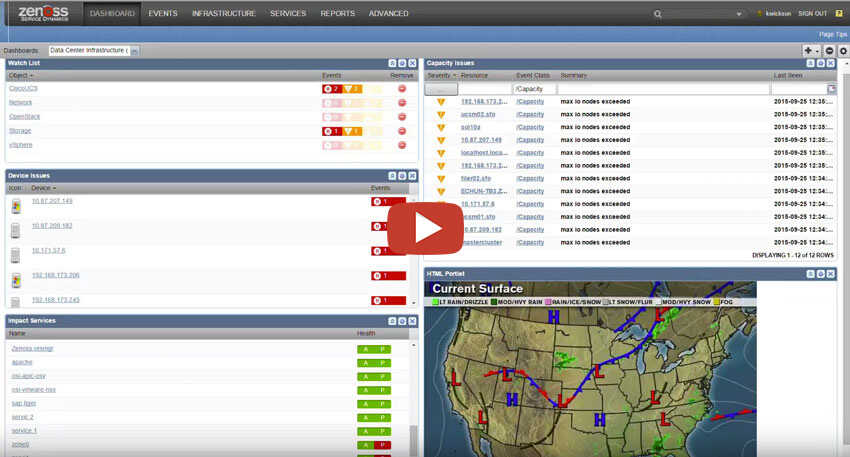For many, the most difficult step in the four steps to an Intelligent Data Center is the third — moving to a common infrastructure. Nearly every data center I’ve seen is home to an amazing collection of computing history. I expect to see an IT manager on Hoarders any day now!
We keep all this stuff around because we think there’s still value in those computing cycles. It’s true that a Pentium calculates just as well as a Xenon (unless you’re talking floating point), but we often overlook the costs of maintaining complexity.
At Zenoss, we work with customers every day to help them eliminate duplicate, redundant monitoring tools. We’ve found that most organizations try to use a dozen different software products to determine what the status of their IT assets is. Does that work? Well, no, not really.
Twitter user @eevee recently summed it up perfectly:
worst thing about ops is that you expect me to learn a dozen complex systems that i only need to use like four times a year
— eevee 💨 (@eevee) September 19, 2015
When you have lots of tools, it’s very difficult to build and maintain expertise in all of them. Having multiple tools is a major cause of poor customer service, as it takes extra time to diagnose and solve problems that are affecting applications.
A Zenoss financial industry customer quantified their customer service problem. For them, solving problems with multiple tools took four times as long as it did with a single tool. What value would your customers place on reducing downtime 80 percent?

Reducing Downtime By a Factor of 4 Is Not Enough
At Zenoss, we make our living helping people focus on application success by reducing downtime. One thing we’ve learned is that day-two operations tooling can only go as far as the underlying infrastructure can take us. While customers value us for our ability to gather data from practically anything in their data center, we’ve seen that the organizations that consistently achieve the best results take another step.
Eliminating the complexity of the IT history museum from your daily work has tremendous results. One of my co-workers talked about simplification this way. “If you really want great results, shoot a platform.” In the modern data center, that means moving as much as possible to a single hardware platform, or more likely to a single cloud provider and a single data center platform. Because who isn’t using both public cloud and a physical data center these days?
We’re conditioned to avoid risks, but here, the proper focus is on the possible return. By eliminating infrastructure differences, we can maximize the value of our time and learning. Choose a vendor-defined converged infrastructure for your data center, and you’ll be able to eliminate choices such as the “best” network adapter drivers — choices that are unlikely to have any effect on the overall organization’s success.
When The Register writes, “Most SysAdmins are jacks of all trades now, and they need to have all the components of their infrastructure under control without spending too much time on it,” they’re talking about this problem.
We’ve found that organizations that build their data centers around a single converged infrastructure generate outsized returns from reliability, maintainability, and overall operations efficiency. That’s why we’re recommending common infrastructure as part of the Intelligent Data Center.






